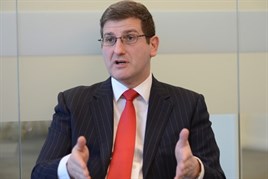 Read the peer review for this feature.
Read the peer review for this feature.
Download the graphs for this feature.
For all the screaming headlines last Christmas about Network Rail’s engineering meltdown at King’s Cross and Paddington, the subsequent delays to services are expected to have no effect on the Moving Annual Average punctuality for train operators East Coast and First Great Western.
In total, just three possessions overran at Christmas out of the 800 implemented by NR’s Infrastructure Projects division. One of them was by just an hour, while the other two were the pair that captured the headlines.
They did so because of the disruption they caused to many thousands of passengers. Chaotic scenes caught on camera at Finsbury Park station in north London did not paint rail in a good light. Those passengers were not the commuters that are Finsbury Park’s staple. They were “families with young children, the elderly and vulnerable often travelling with lots of luggage in an unfamiliar environment”, according to the Office of Rail Regulation.
Were the problems at King’s Cross and Paddington typical of NR’s engineering programme, or were they simply eye-catching outliers of a normal pattern of work?
There’s no doubt they were serious problems. Were they not, then NR Chief Executive Mark Carne would not have made this opening comment to the Transport Select Committee on January 14: “Let me start off by once again unreservedly apologising to all the travelling public on December 27 who were affected by the two incidents at King’s Cross and at Paddington. Clearly this was an unacceptable situation for them and they had a very difficult day.”
This was not the first time NR’s Christmas work has delayed thousands of passengers. Back in 2007, trouble at Rugby crippled West Coast Main Line services. It led to major changes in the way NR plans engineering work, with a new process introduced called Delivering Work Within Possessions (DWWP).
Risk assessment
DWWP introduced a risk assessment - called a Quantified Schedule Risk Assessment (QSRA) - that sought to refine plans such that they had at least a 90% chance of running to time. For Christmas line closures, NR looks for an even higher chance (95%).
Francis Paonessa is the man charged with delivering NR’s renewals and improvement work, as its infrastructure projects managing director.
“You don’t need to be a mathematical genius to figure out that if your risk analysis says you’re going to have a 95% chance of handing back on time, then 1-in-20 probably won’t. Or won’t unless there’s additional intervention or time or something. So that’s not to say that when we enter a weekend planning that 1-in-20 jobs will overrun, but of those critical ones, unless some intervention is put in place, that would be the statistical likelihood based on the Monte Carlo analysis that we’ve done on those projects.”
Increasing the likelihood of an on-time handback from 90% to 95% or to 99% comes at a price. The project management team can put in more resources, such as spare equipment or personnel, but there are times when neither is available. The other option is to look at reducing the impact of any overrun - that is, have a contingency plan for running the railway in some other way if a stretch of line remains closed for longer than expected.
QSRA works by taking a project, splitting it into component parts, and then looking at the likely minimum and maximum times each part could take. It then runs scenarios based on all the parts taking their minimum time and all the parts taking their maximum time, and from there works out the distribution of the likelihood of when the job will finish. For jobs made of standard parts, the result should be fairly accurate. For jobs with novel elements, it’s much more of a challenge to work out the range of likely times.
ORR criticised the QSRA for King’s Cross, noting that meetings had been badly attended. But, counters Paonessa, it was a standard job - having more people at the meeting would not have changed the outcome.
However, he adds: “What we are doing now - putting that extra level of discrimination in between the things that are made up of standard elements, which most of the track jobs are, and the things that are made up of things which have a uniqueness to them, where actually figuring out what the maximums and minimums are is that much more difficult - is why having a greater representation actually at the meeting makes a bigger difference.
“It was a good reminder that on the unusual jobs we need a broad attendance, but actually on the standard jobs of a more repetitive type it’s less critical. But it has really made us look again at it, to ask if there’s a better way of doing this.”
Paonessa acknowledges that QSRA doesn’t explicitly cover each individual element of a job. It doesn’t, for example, appear to cater for the four brand new log grabs used at King’s Cross which had been provided specifically to reduce the risk of delays, but which NR’s report admitted leaked hydraulic fluid.
The risks of specific resources within a project affecting its outcome appear to be averaged out in the statistics loaded into the QSRA process. It’s rather like the delays to the thousands of Christmas passengers having no overall impact on the year’s punctuality figures.











